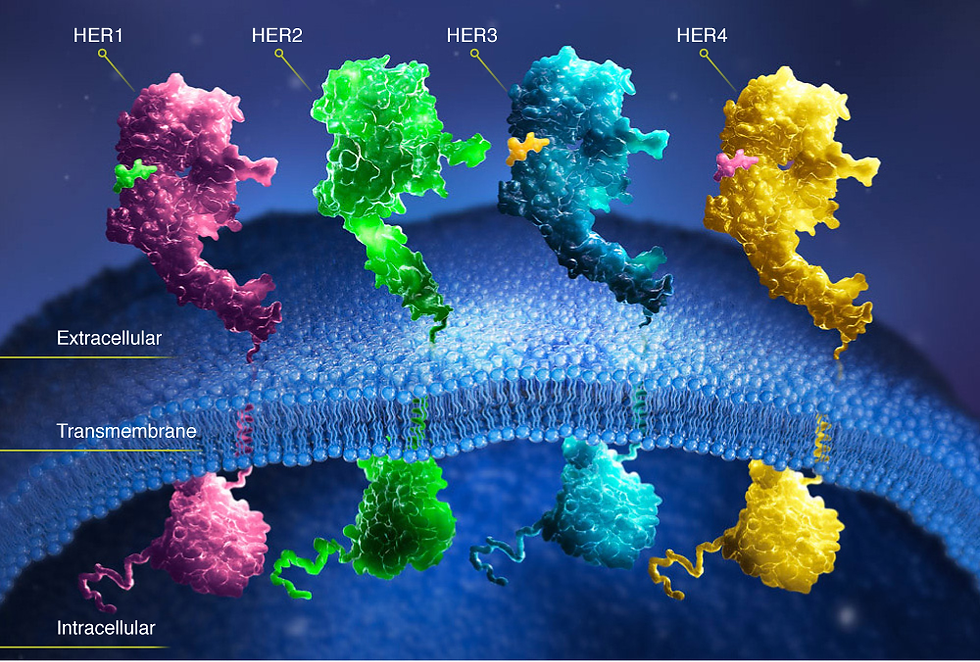What is HER2+?
- Surviving Breast Cancer

- Aug 7, 2022
- 2 min read
Updated: Nov 4
I was sitting in the audience when all of a sudden a slide popped up with “HER3” on it! Throughout my journey with breast cancer, I’ve been focusing on HER2. It’s the one we hear about most often. During our initial biopsy, oncologists and pathologists usually test to see if the tumor is either HER2+, HER2-, or sometimes, it comes back unequivocal. Before I go any further, let’s talk a bit about what HER2 actually is.

What is HER2?
HER2 is also known as the Human Epidermal Growth Factor (HEGF) receptor 2. The HER2 gene makes HER2 proteins, which control how healthy breast cells grow, divide, and repair themselves. However, in ~20% of those diagnosed with breast cancer, the HER2 gene doesn’t work properly and reproduces too many copies of itself, which leads to the breast cells growing and dividing in uncontrollable ways (referred to as HER2 gene amplification and HER2 protein over-expression), or HER2+ Positive breast cancer.
The good news is that with HER2-positive breast cancer, there are receptors on these proteins that usually respond well to treatment. The most common drugs for HER2+ Breast Cancer treatment include:
Herceptin (chemical name: trastuzumab)
Kadcyla (chemical name: T-DM1 or ado-trastuzumab emtansine)
Nerlynx (chemical name: neratinib)
Perjeta (chemical name: pertuzumab) (You can read more about Perjeta side effects here)
Tykerb (chemical name: lapatinib)
I was treated with both Herceptin + Perjeta. (You can read more about these drugs in our blog here)
HER2+ Breast Cancer Prognosis
HER2+ prognosis largely depends on a variety of factors such as the stage of your cancer, health of the patient, age of the patient, size and grade of primary tumor, lymph node involvement, and response to therapy. According to the American Cancer Society and National Cancer Institute, the 5-year relative survival of patients with HR+/HER2+ is 90.4%.
HER1, HER3 & HER4
The ErbB protein family consists of 4 members:
ErbB-1, also called HER1
ErbB-2, also called HER2
ErbB-3, also called HER3
ErbB-4, also called HER4

The HER family can play a role into why some people are resistant to hormonal therapies. Without a scientific background, I have more questions than answers but I am excited to reach out to the medical professionals to help us understand this relationship. Stay tuned for details to come! I am just as curious as you are!
Until then, here are a few articles which speak to HER1, HER2, HER3, and HER4:
NCBI HER1 and 2: https://www.ncbi.nlm.nih.gov/pmc/articles/PMC5950032/
Mass General Hospital has a great article on HER3 and it’s role in breast cancer (http://targetedcancercare.massgeneral.org/My-Trial-Guide/Diseases/Breast-Cancer/ERBB3-(HER3).aspx)
OncoTarget HER4: http://www.oncotarget.com/index.php?journal=oncotarget&page=article&op=view&path%5B%5D=26867&path%5B%5D=83647










